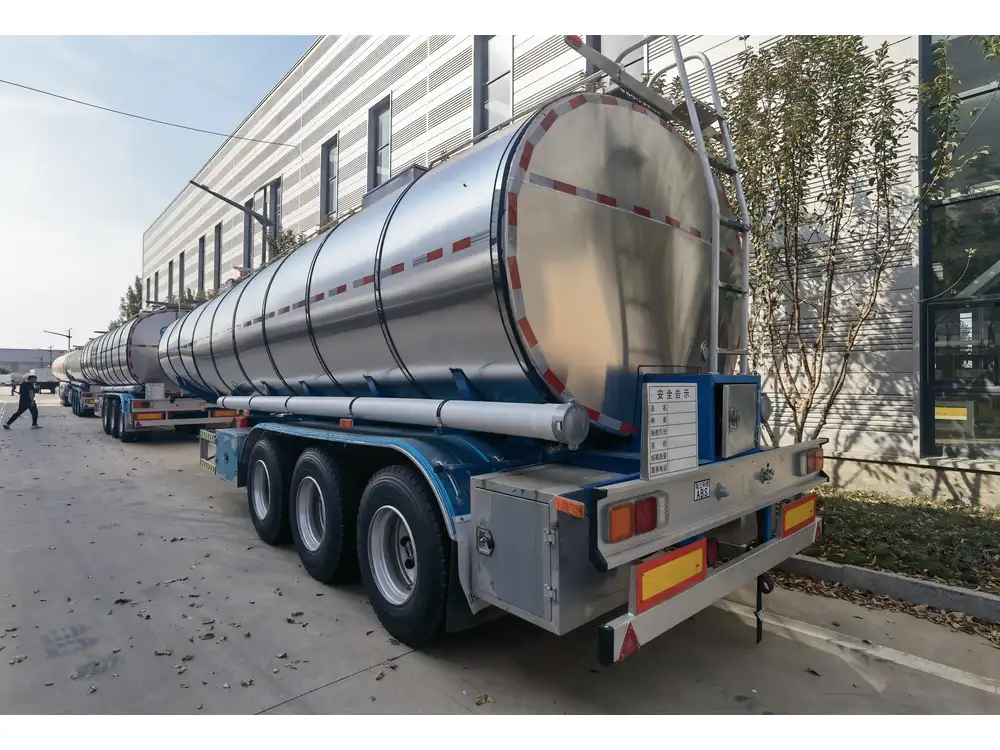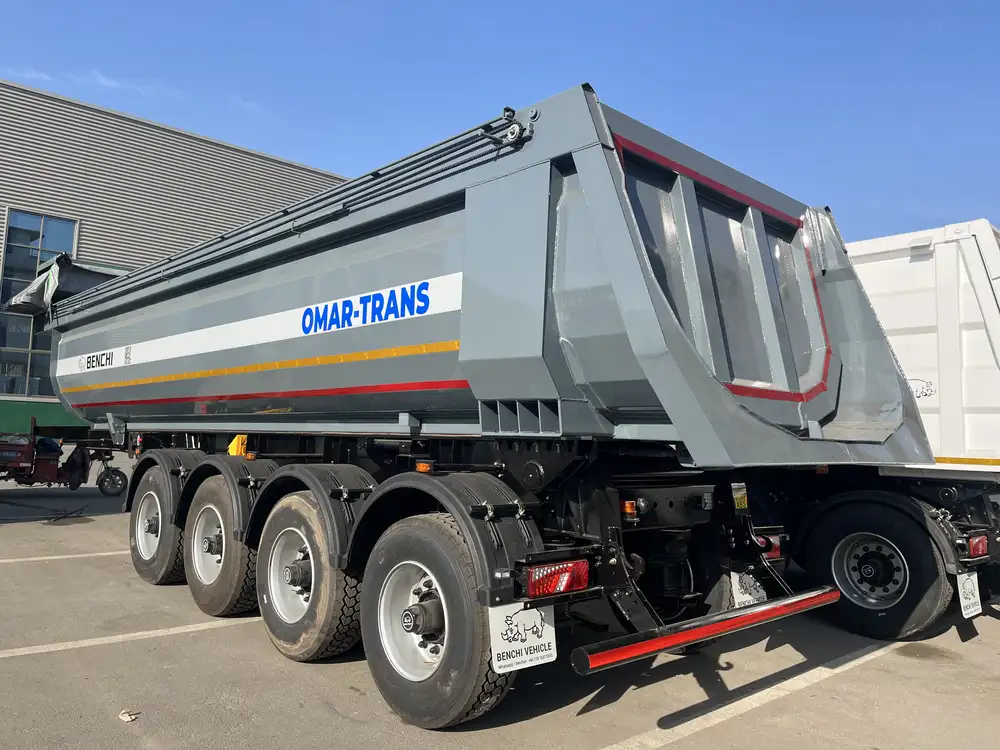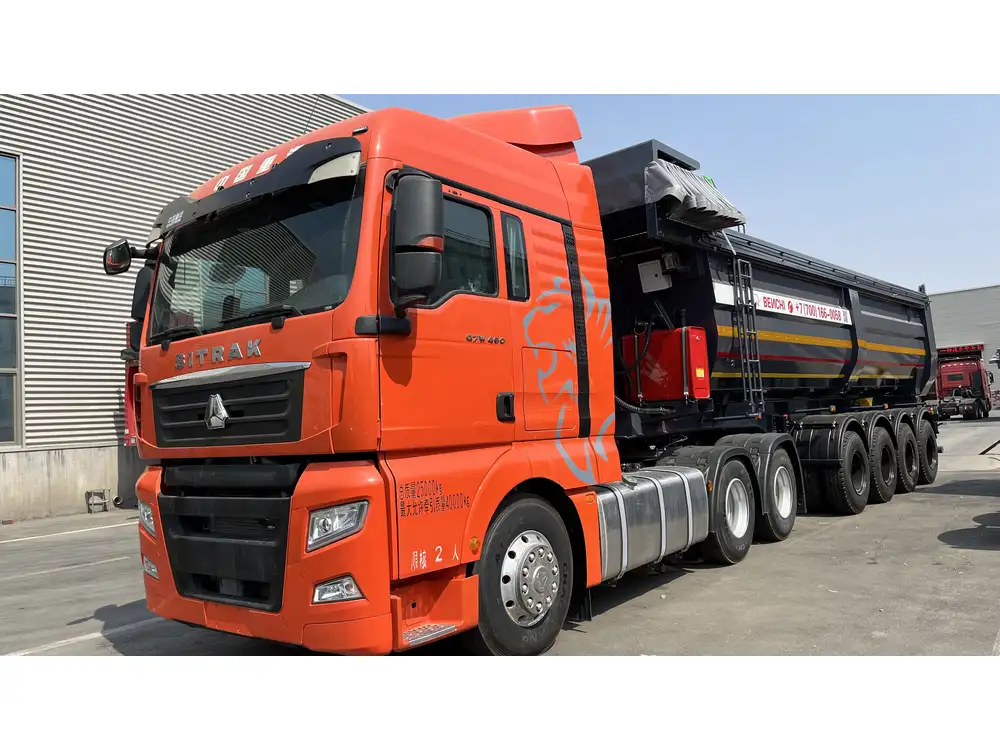In the realm of logistics and transportation, the semi-trailer stands as a linchpin of efficiency and capacity. Often seen crisscrossing the nation’s highways, these vehicles are indispensable for the freight industry. But what, specifically, are the dimensions that govern their design and usage? This article delves deeply into the lengths and widths of semi-trailers, providing insights not only into their standard measurements but also into variations based on specific purposes and regulations.
Standard Lengths of Semi-Trailers
The length of a semi-trailer is generally dictated by commercial regulations but can also differ based on the type of cargo it carries. Let’s explore these categories in detail.
1. Conventional Dimensions
The most commonly encountered semi-trailer is the 53-foot variant. This ubiquitous length allows for maximum volume and efficiency in transporting goods across long distances. However, other standard options include:
| Trailer Type | Typical Length |
|---|---|
| Standard Dry Van | 48 feet or 53 feet |
| Flatbed Trailer | 48 feet or 53 feet |
| Refrigerated Trailer | 48 feet or 53 feet |
| Double-Drop Deck | 48 feet |

2. Specialized Trailer Lengths
Certain industries require specialized trailers with unique dimensions tailored to specific needs:
- Car Haulers: Typically range from 48 to 53 feet in length. Some can even extend beyond this for larger vehicle transport.
- Lowboys: Measured at about 28 feet to handle oversized loads efficiently, these trailers minimize height while maximizing length.
3. Regional Variations
While many dimensions are standardized, regional regulations can dictate allowable lengths. For example, in states that permit longer vehicles, combinations can reach lengths of up to 65 feet or more.
Understanding the Width of Semi-Trailers
While length often garners the spotlight, width is equally vital, particularly when considering road safety and compliance with regulations.

1. Standard Width Dimensions
The standard width of a semi-trailer is generally 8.5 feet (102 inches). This measurement has remained consistent and is crucial for maintaining stability during transit:
| Trailer Type | Typical Width |
|---|---|
| Standard Semi-Trailer | 8.5 feet (102 inches) |
| Specialized Trailers | 8.5 feet (102 inches) |
2. State Regulations and Variability
Some specialized trailers can exceed standard dimensions for specific freight types, such as:
- Oversized Loads: Intended for cargo that exceeds normal limits, these can range up to 12 feet wide, depending on local legislation.
- Interstate Requirements: Width limits can vary, and some jurisdictions may have exemptions for certain types of vehicles, so it’s crucial to be aware of local laws.
The Importance of Dimensions in Logistics
Understanding the dimensions of semi-trailers is fundamentally linked to efficient logistics management. The assorted lengths and widths of these vehicles directly influence cargo capacity, road transportation strategies, and compliance with various regulations.

Load Capacity and Distribution
A semi-trailer’s design dictates its maximum payload, impacting everything from fuel efficiency to road safety. The following factors illustrate this point:
- Volume vs. Weight: A longer trailer generally provides more space for goods but comes with increased weight. Finding the optimal balance is crucial for logistics professionals.
- Axle Configuration: More axles often mean higher weight limits and improved weight distribution, especially for longer trailers.
Regulatory Compliance and Safety
Understanding semi-trailer dimensions is also essential for compliance with the Federal Motor Carrier Safety Administration (FMCSA) regulations. Non-compliance can lead to fines and the necessity of rerouting, disrupting the flow of goods.
Comparative Analysis of Semi-Trailer Types
To better comprehend the variance in designs, here’s a comparative breakdown of various trailer types based on length, width, and common uses:
| Trailer Type | Length | Width | Common Use |
|---|---|---|---|
| Standard Dry Van | 48-53 feet | 8.5 feet (102 inches) | General freight |
| Flatbed | 48-53 feet | 8.5 feet (102 inches) | Heavy loads |
| Refrigerated | 48-53 feet | 8.5 feet (102 inches) | Perishable goods |
| Step Deck | 48-53 feet | 8.5 feet (102 inches) | Machinery transport |
| Lowboy | 28-40 feet | 8.5 feet (102 inches) | Heavy equipment |

Hub-to-Hub Connection: The Role of Trailer Length
When evaluating semi-trailer lengths, we need to consider their impact on logistics. The “hub-to-hub” connection, which refers to the distance between the front axle of the tractor and the last axle of the trailer, significantly affects:
Turning Radius: Longer trailers require more space to maneuver, impacting urban deliveries and private property access.
Fuel Efficiency: Standard length vehicles often provide a balance between fuel consumption and load capacity, essential for long-haul trips.
Factors to Consider for Selection
When selecting the appropriate semi-trailer for specific cargo needs, several key factors must be considered:
- Load Type: Heavier loads may require flatbed designs or specialized vehicles to accommodate weight and size.
- Destination: Urban vs. rural settings can dramatically influence the required length and maneuverability of a vehicle.
- Legal Restrictions: Be aware of local laws governing vehicle dimensions during route planning.
Route Planning and Logistics Coordination
Effective route planning can mitigate challenges posed by trailer dimensions, ensuring timely deliveries despite varying distances and traffic conditions. Employing software or consulting with logistics experts can enhance this process substantially.

Maintenance Requirements Based on Dimensions
Understanding semi-trailer dimensions also affects maintenance schedules and requirements:
- Braking Systems: Longer trailers often necessitate advanced braking systems to maintain safety standards.
- Tire Specifications: The width and weight of a trailer influence the type of tires used; improper sizing can lead to premature wear and periodic replacements.
Conclusion: Navigating the Terrain of Semi-Trailer Dimensions
The complexities surrounding semi-trailer dimensions encompass far more than just length and width; they influence every facet of freight transportation, from compliance and safety to logistics and maintenance.
Key Takeaways
- Standard Measurements: 53 feet is the industry standard length, while the width typically remains at 8.5 feet.
- Variations Exist: Specialized trailers may diverge from these dimensions, depending on their cargo requirements and state regulations.
- Logistics Optimizations: Comprehending the nuances of semi-trailer measurements facilitates informed decision-making in logistics management.
By honing in on these dimensions, logistics professionals can optimize fleet operations, enhance safety, and ensure compliance, thereby driving the industry forward in an increasingly competitive marketplace.



